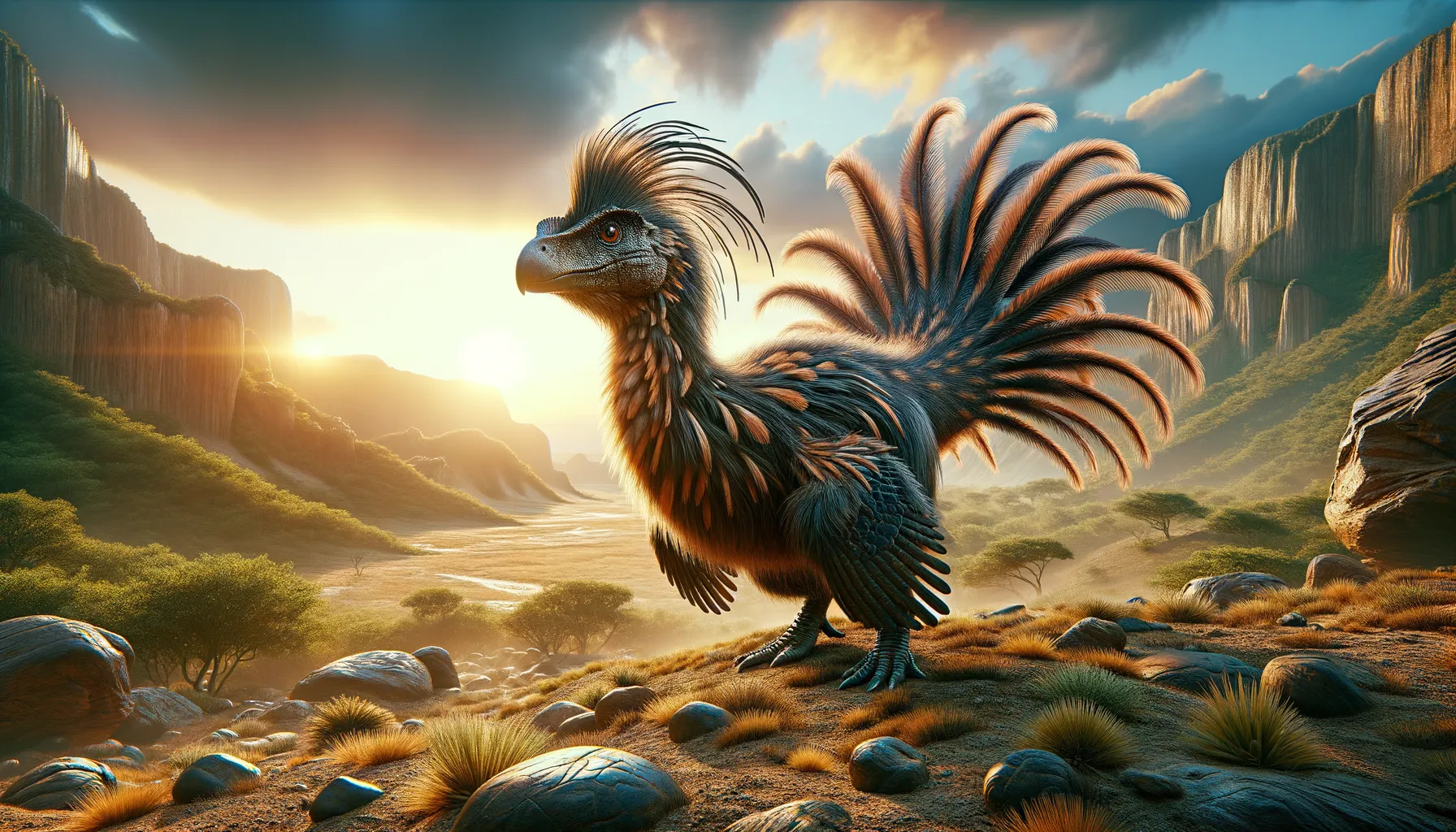
Banji
Discover the feathered enigma of the past.
Period
Cretaceous
Length
About 5 feet in length.
Height
Estimated to be around 2 feet tall.
Weight
Approximately the size of a turkey.
Banji, a small theropod dinosaur from the late Cretaceous period, was discovered in China. Known for its feathered appearance, Banji is an important species in understanding the evolution of feathers in theropods. With a turkey-sized body, it lived in what we now know as Asia and adapted well to its environment. Its discovery sheds light on the diversity of dinosaur species that existed in the Cretaceous landscape.
Diet
Banji was likely an omnivore, feeding on small animals, insects, and possibly plant material. Its diet would have included both available prey and some vegetation.
Hunting
While precise hunting behavior is unknown, it may have used speed and agility to catch small prey. Its relatively small size suggests it was not a top predator, focusing on smaller targets.
Environmental challenges
Banji lived in a dynamic environment with changing climates towards the end of the Cretaceous. It had to adapt to fluctuations in temperature and food availability. These challenges likely led it to a diverse diet to ensure survival. Competition with other small theropods would have also been a significant challenge, requiring adaptability and resourcefulness.
Speed
Likely moved at moderate speeds.
Lifespan
Exact lifespan is unknown, but typical of similar dinosaurs.
First discovery
Discovered in China in 2012.
Fun Facts
- Banji was a small dinosaur that lived around 160 million years ago during the Late Jurassic period.
- This dinosaur's name, Banji, means "striped crest" in Chinese, referencing its likely decorative head feature.
- Banji belonged to a group of theropod dinosaurs, which also includes the famous T. rex and modern birds.
- Fossils of Banji have been discovered in what is now China, making it part of the rich dinosaur fauna of Asia.
- Banji was a feathered dinosaur, which suggests it might have had vibrant colors or patterns to help with display or camouflage.
- Though Banji was a carnivorous dinosaur, it was quite small, likely feeding on insects or small animals.
- Banji's skull structure indicates it might have had a good sense of smell, useful for hunting or navigating its environment.
Growth and Development
Banji, like many theropods, would have hatched from eggs and grown rapidly to avoid predation. Juveniles were likely as agile and quick as adults, helping them evade danger. Their feathered bodies might have provided some insulation, aiding their growth in cooler climates.
Habitat
Banji inhabited what is now China, during a time when Asia was home to rich and varied ecosystems. Its environment included forests, allowing for ample cover and hunting grounds. These habitats were rich with the prey and vegetation necessary for Banji's survival.
Interaction with other species
Banji likely lived alongside other small theropods and larger herbivores. Competition for resources would have been a constant feature of its existence. Its position in the food chain meant interacting as both predator and prey within its ecosystem.
Natural lifespan
Similar dinosaurs may have lived up to 10-20 years.
Reproduction
Banji, like many theropods, likely laid eggs in nests. Parental care might have involved guarding the nest and the young. This behavior would help ensure the continuation of its species.
Social behaviour
Banji might have exhibited some social behavior, especially during the breeding season. Group hunting or foraging could have been possible, but it was likely more solitary outside of mating periods.
Fossil locations
Banji fossils were initially found in China, providing insight into the diversity of Asian theropods. These locations have yielded many other significant fossil finds, critical to understanding late Cretaceous ecosystems in Asia.
